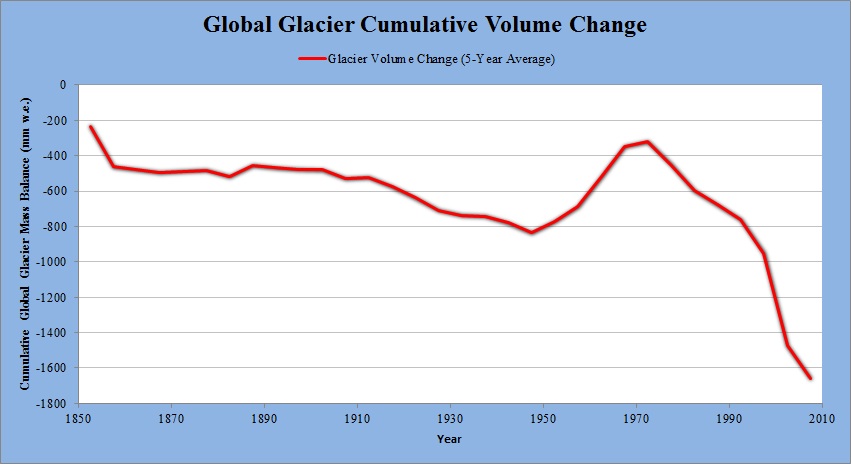What's happening to glaciers globally?
Posted on 16 September 2010 by robert way
Although Glaciologists measure year-to-year changes in glacier activity, it is the long term changes which provide the basis for statements such as "Global Glacier Recession Continues". Some Skeptics confuse these issues by cherry picking individual glaciers or by ignoring long term trends. Diversions such as these do not address the most important question of what is the real state of glaciers globally?
The answer is not only clear but it is definitive and based on the scientific literature. Globally glaciers are losing ice at an extensive rate (Figure 1). There are still situations in which glaciers gain or lose ice more than typical for one region or another but the long term trends are all the same.

Figure 1: Long term changes in glacier volume adapted from Cogley 2009.
It is also very important to understand that glacier changes are not only dictated by air temperature changes but also by precipitation. Therefore, there are scenarios in which warming can lead to increases in precipitation (and thus glacier ice accumulation) such as displayed in part of southwestern Norway during the 1990s (Nesje et al 2008).
The bottom line is that glacier variations are largely dependent on localized conditions but that these variations are superimposed on a clear and evident long term reduction in glacier volume which has accelerated rapidly since the 1970s.
This post is the Basic version (written by Robert Way) of the skeptic argument "glaciers are growing".































 Arguments
Arguments
























 0
0  0
0








Comments